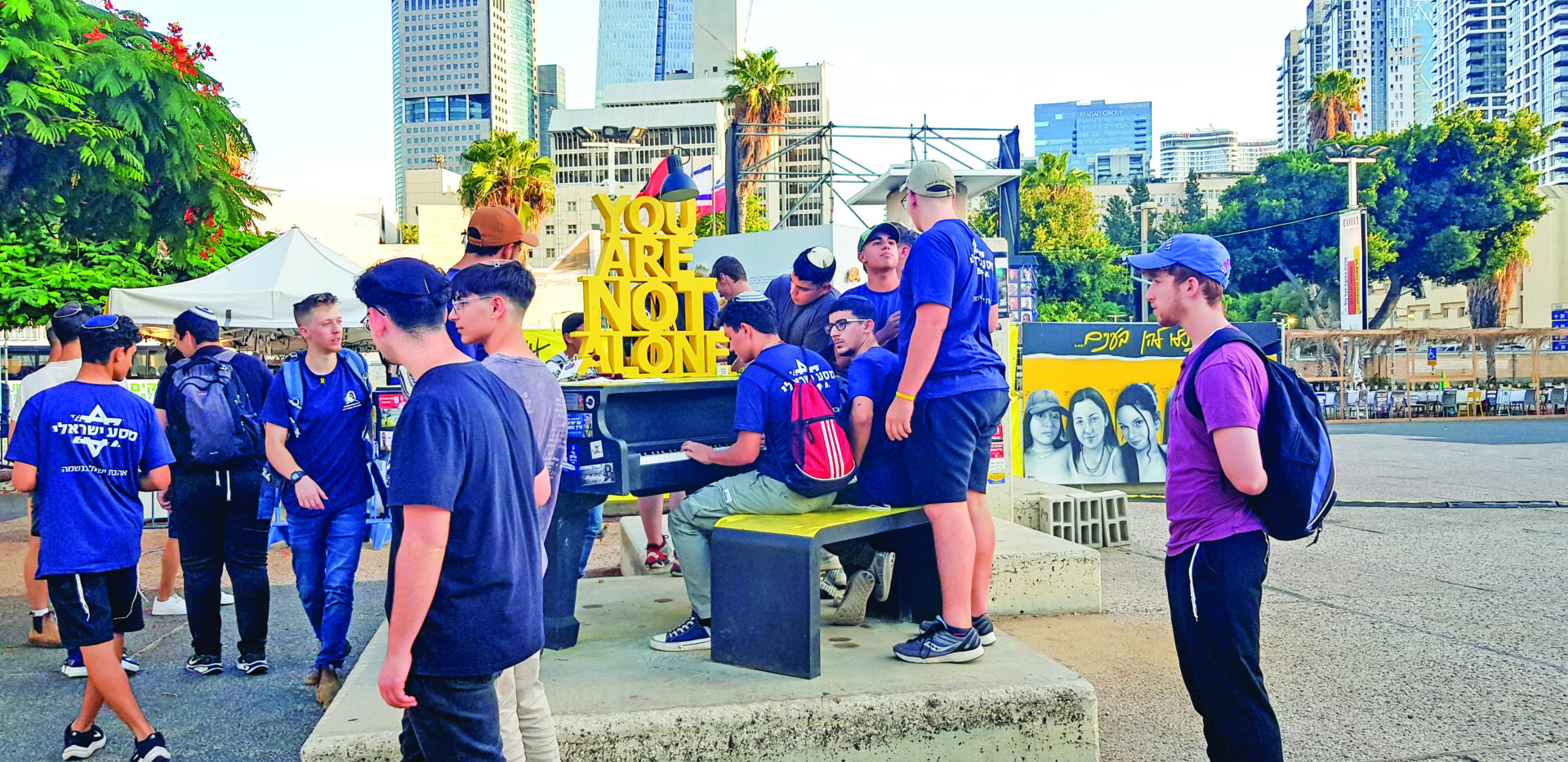Tel Aviv/New Delhi: Nightlife is busy. Eateries are overflowing. But the yellow ribbons and posters saying ‘Bring Them Home Now’ are ubiquitous. The reference is to the around-100 hostages that the Hamas still has in its custody.
A diary on Israel must begin in Ethiopia, courtesy Air India. Air India’s direct 6-hour flight to Tel Aviv from New Delhi has been suspended since August by the chicken-hearted carrier for fear of war. So most travellers have to reach Israel either via the Ethiopian capital Addis Ababa, or via Dubai. Via Ethiopia it’s a 15-hour-long haul, with the layover being almost five hours. Addis Ababa’s Bole airport is Chinese built. It is swanky, but also sleepy. Like most of China’s BRI projects, this one too appears to be a white elephant. The Chinese have left their imprint all over the airport, with every sign, every board having Chinese lettering along with English and Ethiopia’s local language. China won’t let anyone forget that they built it. It’s just that the television at one of the restaurants at Bole keeps playing Hindi music videos—the only music wafting through the terminal—throughout the near five hours that this writer spent at the airport. It is almost as if the Chinese have built the airport so that Ethiopians can play Indian music.
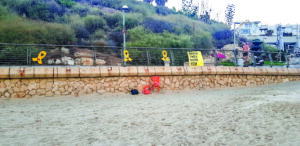
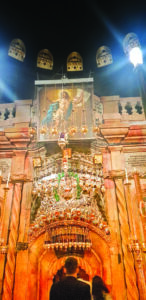
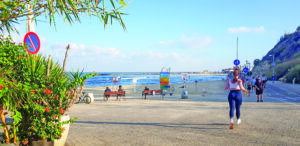
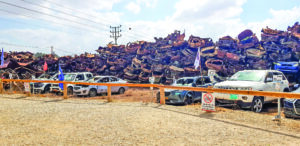
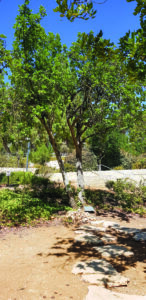
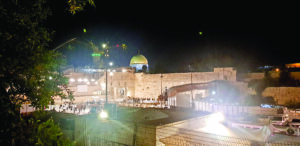
*
The war is real. The realisation hits you while standing on the stairwell on the eleventh floor of one of Tel Aviv’s hotels dotting the Mediterranean coast. It is early morning in Israel, just past 6.30 am on 25 September, Wednesday, when sirens go off, warning of either a missile or a rocket attack on Tel Aviv. The siren is cue for everyone to run to the nearest “safe place”—in the case of the hotel it is the central stairwell. Once it’s completely quiet outside and just when it seems the emergency is over, a dull “thud-thud” begins. It’s the “good thud”, you are assured by other guests crowding the stairwell, for it means that Israel’s Iron Dome missile shield is active and the missiles/rockets are being intercepted. Later in the day, news comes that it was no “ordinary” rocket, but a ballistic missile, Qader 1, an Iranian version of a North Korean missile, which is one of the most potent in its class, with a range of around 1,000 km, something akin to India’s Agni 1 system. It was the first ever missile attack by the Hezbollah on Israel—they fire rockets otherwise—and was launched from the Lebanon border, around 220 km away as the crow flies. The target, according to the Hezbollah, was the Mossad headquarters in Tel Aviv. It was the first ever Hezbollah missile that reached Israel’s financial heart and would have wreaked havoc but for the IDF Aerial Defense Array. It’s also no coincidence that Qader 1 was launched at 6.29 am. It was at 6.29 am on 7 October 2023 that the Hamas launched its attack on Israel, which Israelis call their second holocaust, such was the barbarity involved. They say it was not a terrorist attack, but a Nazi-like attempt to exterminate the Jewish people, and if one has to go by the evidence shown to this newspaper, one would tend to agree. Inside two days of the Hezbollah’s missile attack on Tel Aviv, their secretary general, Hassan Nasrallah was taken out by the Israel Defense Forces (IDF). On 1 October, in retaliation, Iran fired around 180 missiles on Israel, many of which landed, while the others were intercepted. But the country of over 9 million people went to their “safe place”, while the Iron Dome got active. The only human casualty was a Gazan who was walking around the West Bank city of Jericho when missile debris fell on him.
*
It is remarkable how Tel Aviv returns to normal inside minutes of the missile scare. The beach is buzzing. People play beach volleyball. Surfers, joggers, swimmers crowd the seafront. And this even as military helicopters criss-cross the cerulean sky, transporting soldiers—the only reminder of the scare that Tel Aviv got earlier in the morning. But for a missile scare or two, the most happening thing on Tel Aviv’s seafront are the e-scooters and e-bikes, zipping past at high speed—“happening” because if they crash into anyone, that person will happen to lose either limb or life, or both. Even though there are dedicated biker paths, the eco-friendly bikes can be a tad too unfriendly to humans on the promenade if one is not watching out.
*
Tourism has taken a beating in Israel. Home to three world faiths, Judaism, Christianity and Islam, in 2019, Israel had a record 4.5 million international
*
Since this is Israel, nightlife too can come with a price. A Tel Aviv suburb, the ancient port of Jaffa, with its cobbled streets, great eateries and better views of the Mediterranean Sea, came under a terror attack on the night of 1 October, minutes before Iran started firing its missiles at Israel. The terrorists were neutralised, but not before they had taken the lives of eight people.
*
Honouring the dead comes naturally to Israel. Yad Vashem, the World Holocaust Remembrance Centre in Jerusalem, is proof of that. Built in 1953 by an act of Knesset (Parliament), and designed by Moshe Safdi, it was set up to commemorate the six million Jews who were killed by Hitler’s Nazi Germany. Located on Mount of Remembrance in Jerusalem, it has several museums, monuments, memorials and research and education centres. Meticulously researched, Yad Vashem has the world’s largest trove of material on the Holocaust. Here you have the skeleton of a train that carried the Jews to their death camp in Auschwitz, the carts that were used to transport the dead bodies, the cobblestones that lined the streets of a Polish ghetto, the shoes of those who were murdered in the gas chambers—letters, photos, clothes. Every piece on display has its own story and is now a part of history that cannot be forgotten. On the Avenue of the Righteous Among the Nations, the “righteous” who helped the Jews have been given their own trees. The German industrialist and Nazi Party member, Oskar Schindler, who saved 1,200 Jews, has his tree here. One of the highlights of the museum is the list of the names of each and every Holocaust victim. Millions of names have been collected, but many more remain. Work is going on to find more names, their history, things left behind by them. Yad Vashem’s decades-long process of research and documentation is not yet complete.
*
The Car Wall in Gaza Envelope, Israel’s southern district adjacent to the Gaza strip, comprises a pile of cars that were set on fire by Hamas terrorists on 7 October 2023, more often than not with the occupants inside them. In this “burnt cars compound” there is an ambulance where youngsters had taken shelter, but all died when the Hamas hit it with rocket propelled grenades. There is a van where a few elderly were going on a trip. The Hamas stopped the van and shot all the passengers and set it on fire. Around 1,800 vehicles had been destroyed that day. Every vehicle has its own story and is now a part of history, which Israel will not forget.
*
Jerusalem, built on the limestone hills of Judaea, is the holiest city for the Jews, the Christians and the Muslims. The birthplace of the three Abrahamic faiths, it is home to the Western Wall, the Dome of the Rock, the Al Aqsa mosque as well as the Church of the Holy Sepulchre. On a cool Tuesday evening, 24 September, the sound of azaan floats in the air from a minaret right next to the Church, which is believed to be Jesus’ burial place and his place of resurrection. Down the serpentine lanes of the Old City is located the Western Wall, which is the site of the First and Second Temples of Jerusalem, that were destroyed by the Babylonians and the Romans in 587-586 BCE and 70 CE, respectively. The faithful throng the place as prayers and chants vibrate through the air. It’s crowded with Orthodox Jews, including school children. Behind the Western Wall is located the Dome of the Rock, known to Jews as the Temple Mount where the temple of Jerusalem once stood; while Muslims believe that Prophet Muhammad went to heaven from the rock where the Dome stands. Next to it is Al Aqsa, another mosque of immense significance to Muslims. Jerusalem is at the heart of the Israel-Palestine conflict, which seems nowhere near to be solved.
*
In the Arab quarters of Jerusalem’s Old City, the group of visiting Indian journalists is greeted with “Pakistan, Pakistan” by the “Palestinian” shopkeepers—they all have Israeli citizenship though. Given that Pakistanis cannot visit Israel as their country’s passport bars them from it, were the shopkeepers heckling the Indians or did they misidentify them as Pakistanis? Let’s leave that for the reader to decide.
*
Back at Ethiopia’s Bole airport, a group of carpenters from West Bengal’s Nadia and adjacent districts are headed for Israel. They all have a contract of five years each to work in Israel. They are part of the thousands of skilled workers that Israel is hiring from India. The Gazans, who did a lot of the construction and other such work in Israel, turned out to be Hamas informants. They conducted the recces for Hamas and passed on every bit of information to help them carry out the genocidal attack of 7 October 2023. Israel has turned to friend India to help it replace these workers.
One year after the Hamas attack, the divide has got deeper. Israelis will not be able to trust their immediate neighbours ever again.

